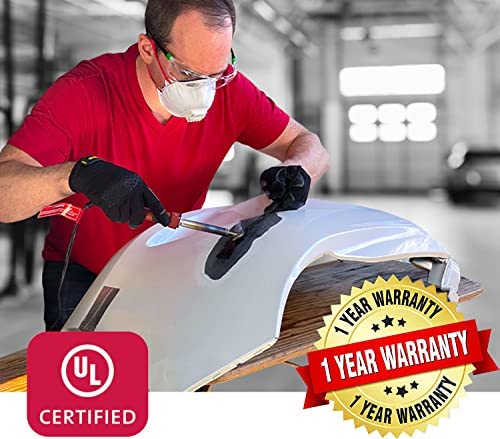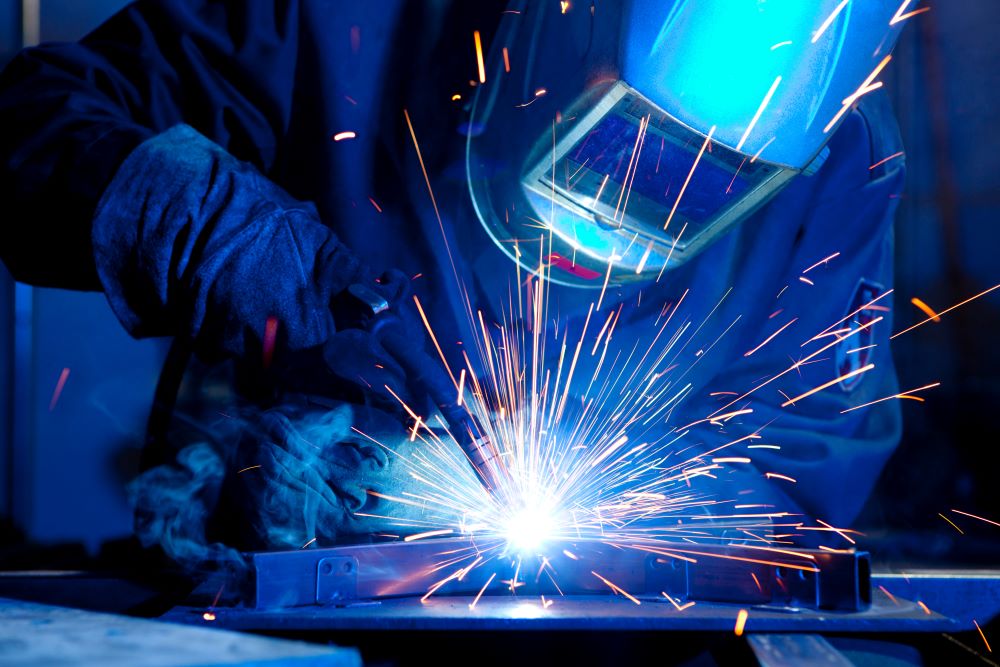Common Welding Repair Service Issues and Exactly How to Address Them Properly
Welding repair services frequently experience a series of issues that can threaten the integrity of the final product. Usual problems consist of insufficient penetration, porosity, and misalignment, to name a few. Each defect offers distinct obstacles that require particular strategies for resolution. Comprehending these problems is necessary for welders intending to enhance their skills and outcomes. This conversation will certainly check out these typical welding repair work concerns and efficient approaches to resolve them.
Inadequate Infiltration
Poor penetration happens when the weld metal fails to fully fuse with the base material, causing weak joints and possible architectural failings. This concern typically originates from inadequate heat input, inaccurate electrode angle, or incorrect welding rate. Welders might run into insufficient infiltration because of a miscalculation of the necessary parameters for a details material density or kind. Furthermore, contamination on the base material's surface area can impede reliable bonding, exacerbating the problem. To resolve poor penetration, welders need to guarantee appropriate settings on their devices and preserve a clean job surface area. Normal inspection of welds is advised to recognize any deficiencies early, enabling for prompt improvements and the avoidance of jeopardized structural integrity in bonded settings up.
Porosity
Porosity is an usual issue in bonded joints that shows up as tiny gas bubbles caught within the weld steel. This issue can compromise the stability of the weld, resulting in lowered stamina and possible failure under anxiety. Belgrade. Porosity generally occurs from contamination, dampness, or improper welding techniques, which allow gases to leave right into the molten weld pool. To deal with porosity, welders ought to ensure appropriate surface area preparation, keep a tidy workplace, and use ideal welding specifications. In addition, picking the appropriate filler material and securing gas can minimize gas entrapment. Normal evaluation and screening of welds can help recognize porosity early, assuring timely rehabilitative activities are taken, thus protecting the top quality and dependability of the welded structure
Misalignment
Imbalance in welding can develop from different factors, consisting of inappropriate configuration and thermal expansion. Recognizing the origin is necessary for effective resolution. A number of improvement methods are offered to straighten parts and guarantee structural honesty.
Reasons for Imbalance
Welding misalignment typically comes from a variety of underlying issues that can endanger architectural honesty. One key reason is incorrect fit-up of components prior to welding, which can lead to spaces and uneven surface areas. Variations in thermal development during the welding process can likewise result in distortion, especially if the materials being joined have various coefficients of expansion. In addition, inadequate fixturing and clamping might stop working to hold elements safely in position, resulting in activity throughout welding. Poorly kept equipment, consisting of welding equipments and tools, may present inconsistencies in the weld grain, further adding to misalignment. Driver error, stemming from insufficient training or experience, can additionally play a substantial duty in creating misaligned welds.

Improvement Strategies Readily Available
Resolving imbalance efficiently requires a combination of restorative methods tailored to the specific problems handy. One typical technique is using jigs or fixtures to hold elements in the proper setting during welding, making certain regular placement. Furthermore, pre-heating the products can help in reducing distortion and enhance fit-up. For considerable imbalance, mechanical realignment methods, such as making use of hydraulic jacks or clamps, can be employed to remedy the placement before welding. Post-weld warmth treatment may additionally be required to relieve tensions brought on by imbalance. Careful examination and modification during the configuration phase can stop imbalance issues from coming to be substantial troubles, promoting a smoother welding process and enhancing general architectural integrity.
Distortion
Distortion is an usual challenge in welding that can arise from numerous factors, consisting of uneven heating & cooling. Recognizing the reasons of distortion is important for carrying out reliable avoidance methods. Addressing this concern not only boosts architectural honesty but likewise boosts the overall quality of the weld.
Reasons of Distortion
When based on the intense warmth of welding, materials often undertake changes that can cause distortion. This phenomenon largely emerges from thermal growth and contraction during the welding procedure. As the weld area warms up, the product expands; upon air conditioning, it gets, which can develop inner stress and anxieties. Additionally, uneven heating throughout a work surface can intensify these anxieties, causing bending or bending. The type of material also plays a significant duty; metals with differing thermal conductivity and coefficients of development might respond in different ways, resulting in unpredictable distortions. In addition, poor joint design and inadequate fixturing can contribute to misalignment during welding, enhancing the chance of distortion. Recognizing these reasons is important for efficient welding fixing and avoidance approaches.
Prevention Techniques
Efficient prevention techniques for distortion throughout welding emphasis on controlling warmth input and guaranteeing appropriate joint design. Maintaining a consistent warm input aids to minimize thermal expansion and contraction, which can bring about distortion. Utilizing methods such as preheating the work surface can also lower the temperature gradient, promoting consistent home heating. In addition, selecting appropriate joint styles, such as T-joints or lap joints, can boost stability and lower stress and anxiety concentrations. Carrying out correct fixturing to protect the work surfaces in position better aids in preserving positioning throughout the welding process. Staggered welding series can distribute warm a lot more uniformly, avoiding local distortion. By applying these methods, welders can considerably decrease the likelihood of distortion and enhance the general high quality of their welds.
Cracking
Fracturing is a common concern run into in welding repair services, typically resulting from various variables such as incorrect cooling prices, material option, or insufficient joint preparation. The occurrence of splits can substantially endanger the stability of the weld, resulting in potential failures during procedure. To resolve this concern, welders have to first examine the source, making certain that products are compatible and properly picked for the particular application. Furthermore, controlling the cooling rate throughout the welding process is necessary; quick cooling can cause anxiety and result in breaking. Appropriate joint design and prep work additionally add to decreasing the risk. Implementing these strategies can improve weld quality and sturdiness, ultimately minimizing the chance of splitting in completed weldments.

Insufficient Combination
A substantial problem in welding fixings is insufficient combination, which takes place when the weld steel does not effectively bond with the base material or previous weld passes - Montana Mobile Welding and Repair Welding. This problem can bring about weaknesses in the joint, possibly jeopardizing the stability of the welded framework. Variables adding to insufficient blend consist of not enough heat input, incorrect welding strategy, and contamination of the surfaces being joined. To address this concern efficiently, welders must guarantee proper pre-weld cleansing and surface lidl welder preparation, as well as readjust their welding criteria to attain sufficient penetration and fusion. Normal examination throughout the welding procedure can likewise help identify incomplete blend early, permitting for timely rehabilitative procedures to enhance the total high quality of the weld
Overheating
While welding repair services can boost structural honesty, overheating presents a considerable obstacle that can cause material deterioration. Excessive warm during welding can change the mechanical properties of steels, leading to decreased stamina, raised brittleness, and bending. This phenomenon is especially essential in high-stress applications where architectural dependability is extremely important. Recognizing overheating can entail visual assessments for discoloration or distortion, along with checking temperature during the welding procedure. To mitigate the threats connected with overheating, welders ought to utilize proper techniques, such as controlling heat input, changing travel speed, and utilizing ideal filler products. Furthermore, carrying out pre- and post-weld warm treatments can aid bring back product residential properties and boost the general quality of the repair service, making certain long-lasting efficiency and safety and link security.
Often Asked Concerns
What Are the Typical Signs of a Welding Defect?

How Can I Test My Welds for Quality?
To evaluate welds for top quality, one can utilize visual examinations, ultrasonic screening, and radiographic approaches. Each technique guarantees architectural stability, identifies issues, and confirms adherence to specified requirements, inevitably improving the reliability of the welded joints.
What Security Precautions Should I Take While Welding?
When welding, one should prioritize security by putting on appropriate individual protective tools, guaranteeing appropriate air flow, securing flammable materials away, keeping a tidy workspace, and understanding environments to avoid mishaps and injuries.
Can I Fix a Weld Without Redoing the Entire Joint?
Repairing a weld without renovating the whole joint is feasible, relying on the damage (Montana Mobile Welding and Repair Belgrade). Methods such as grinding, adding filler material, or utilizing a welding procedure can successfully deal with specific problems while protecting the surrounding framework
What Equipment Are Vital for Reliable Welding Repairs?
Important devices for effective welding repair work consist of a welding maker, wire brush, mill, safety equipment, clamps, and filler products. Each device plays a vital function in making certain high quality and safety throughout the fixing process. Porosity generally arises from contamination, wetness, or incorrect welding methods, which enable gases to leave right into the molten weld pool. Badly conserved devices, consisting of welding makers and devices, may present disparities in the weld bead, further adding to imbalance. When subjected to the extreme warm of welding, products commonly go through adjustments that can lead to distortion. Cracking is a common problem experienced in welding fixings, usually resulting from numerous aspects such as incorrect cooling rates, material selection, or poor joint prep work. A significant issue in welding repair mini spot welder for batteries services is insufficient fusion, which happens when the weld metal does not adequately bond with the base material or previous weld passes.